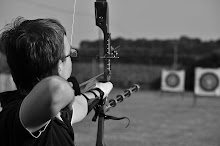Archives
-
▼
2010
(165)
-
▼
February
(21)
- 3 way convo.... JAZZ NOSE
- PHSYCO
- ROPE
- THE PROPOSAL
- drawings WWEEIII
- cocktail umbrellas
- charecter studies
- Final
- Final Ideas story and essay
- CUTTING EDGE
- FINNNAALLLYYY WOOOPPP (BIG BUG BAIR OFF MY CHEST W...
- nmore to come
- CGI tutorials
- more sketches with new thoughts
- Visuals
- U'll need sound but I found this amaizing
- ALLISON the debate about my profile look should be...
- working lunch intro
- La Jetee directed by Chris Marker 1962
- GROUP 3
- STORY IDEAS
-
▼
February
(21)




Interim Online Review 16/02/2010
Hey Matt,
If I'm completely honest, I'm a little worried. I have a number of issues I'd like to bring to you - in no particular order.
1) There's a quality issue; I see no real attempt on your part to refine your drawings - character or environment - and this despite the previous units' emphasis on the importance of the 2d, digital painting etc. in the pre-production - and also your appreciation and sensitivity for the human form, anatomy and proportion. Your sketches look as if they were produced very quickly and without refinement. The standard is simply not high enough - and if you struggle in these areas, then it is your responsibility to 'self-medicate' - on the brief there is an extensive book list dealing with character design/storyboarding etc. Let me be very clear; I expect your 2d literacy to improve dramatically in these next 3 weeks, because - again, honestly - no one is going to take your 'worlds' seriously if you don't find an engaging and effective way to portray them.
2) Your story idea still has problems; it seems to me you have an 'already captive miniature mermaid (in a pond)' being put into a tank - and then she escapes (where - back to captivity?) via a cocktail umbrella (which is made of paper!) via a filter, and then, with a wet, paper umbrella, floats to freedom... Doesn't sound too satisfying, does it? At least not yet. Also - the more epic story you mention is a big no-no, for the obvious reason that you're challenged to produce a one-minute animation. I think you need to think again about your 3 story components...
I saw this
http://cactusshadowkid.files.wordpress.com/2009/02/octopusumbrella.jpg
Another way to take things? Maybe you SHOULD base your story underwater, with the mermaid using her environment to 'acessorise'?
I don't think you're yet giving the true challenges of this unit - drawing, 'directing with a pencil' story-crafting etc. - you're fullest attention - and i notice too that you've only just completed the pirate chest tutorial, which suggests you're focus is very divided.
If you want a 'good news day' come the crit - you need to better grasp the challenges of this brief and seize them by the throat.
Re. your essay, beware of 'describing' the story of Finding Nemo - that's not your job; only describe as much you need to create an argument re. the way in which the film's structure helps transmit its story ideas... please see next posts for more general advice.
“1,500 word written assignment that analyses critically one film in terms of the relationship between story and structure; you should consider camera movement, editing, and the order of scenes”
While the essay questions asks you to analyse one film in terms of the relationship between story and structure, you are nonetheless expected to contextualise your analysis – and that means you have to widen your frame of reference to include discussion of other, related films and associated ideas – and also the ‘time-line’ within which your case-study sits.
So, for example, if you are focusing on a scene in a contemporary film which makes dramatic use of montage editing and quick-fire juxtaposition of imagery (the fight scenes in Gladiator, the beach landings in Saving Private Ryan, the bird attacks in The Birds…) no discussion of this scene would be complete without you first demonstrating your knowledge of the wider context for your analysis – i.e., the ‘invisible editing’ approach as championed by W.D. Griffith, and the alternate ‘Eisensteinian’ collisions adopted by Russian filmmakers (and now absorbed into the grammar of mainstream movies). In order to further demonstrate your appreciation for the ‘time-line’ of editing and its conventions, you should make reference to key sequences in key films – ‘The Odessa Steps sequence’ from Sergei Eistenstein’s Battleship Potemkin (as in scene in the Cutting Edge documentary, but also viewable here in full
http://www.youtube.com/watch?v=Ps-v-kZzfec
Also – if further proof were needed of the influence of this scene, watch
http://www.youtube.com/watch?v=yH1tO2D3LCI&feature=related
The Cutting Edge documentary, as shown on Monday 15th Feb, is viewable on YouTube at http://www.youtube.com/watch?v=xJcQgQHR78Q
If you choose to quote from any of the ‘talking head’ sections (Ridley Scott, Walter Murch etc.), in support of your discussion, ensure you put the documentary’s original details in your bibliography (as opposed to the You Tube url). For official title and release date etc. visit
http://www.amazon.co.uk/Cutting-Edge-Magic-Editing-Region/dp/B0009PVZEG/ref=sr_1_1?ie=UTF8&s=dvd&qid=1266311784&sr=1-1
Put simply, whatever film you choose to discuss, you will need to link it to its ‘ancestors’ and also, where appropriate, to its ‘children’ – i.e., what influenced it/what it influenced.
Regarding the ‘language of editing etc.’ the following site is useful – if ugly!
http://www.aber.ac.uk/media/Documents/short/gramtv.html
I suggest you use it only as a starting point for focusing your research parameters – not as the fount of all knowledge (it isn’t!).
Something that keeps coming up is how to cite websites using the Harvard Method:
GO HERE!!!!! IT’S GOT ALL THE ANSWERS!
http://www.ucreative.ac.uk/index.cfm?articleid=25881
http://fc03.deviantart.net/fs14/f/2007/105/b/1/Organization_Atlantica_by_NorthernBanshee.jpg
Don't get too hot.